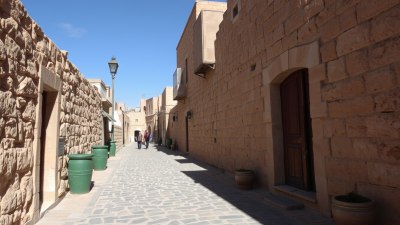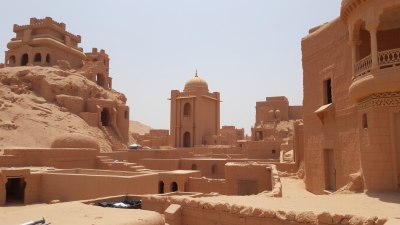Shadows Bloom in As-Salt, Jordan
Explore the enchanting landscapes and rich history of As-Salt, Jordan, where shadows reveal hidden beauty.

Image created with Flux Schnell
As-Salt, a city steeped in history and cultural richness, is situated northwest of the capital city of Jordan, Amman. With its stunning landscapes dotted with ancient architecture, the shadows in As-Salt create a unique interplay of light and dark, offering fascinating insights into the region’s heritage. This article delves into the hidden beauty of As-Salt, shedding light on its historical significance, architectural wonders, and the vibrant culture of its people.
The story of As-Salt dates back to ancient times, with archaeological findings indicating settlements in the area for thousands of years. This historical significance is reflected in the city’s architecture, particularly the traditional stone houses built in a unique local style that combines different periods and influences. Walking through the narrow streets, visitors are greeted by breathtaking views of old buildings, their facades casting intricate shadows on the cobblestone paths.
The Architectural Heritage
The architectural heritage of As-Salt is one of its most remarkable features. The city is known for its stunning homes, many of which were built during the late 19th and early 20th centuries. These homes often showcase ornate decorations, elaborately carved arches, and beautiful balconies. The use of local limestone and traditional building techniques has ensured that many of these structures have stood the test of time, captivating visitors with their charm. Noteworthy buildings include the Al-Ma’ani House, which represents the architectural style of the time and has been preserved as a historical site.
The royal palaces and churches scattered throughout the city further enhance its historical significance. As-Salt has a rich religious history, with places of worship that reflect the various faiths that have coexisted in the region over the centuries. The churches, in particular, illustrate the early Christian presence in Jordan, while mosques such as the Great Mosque of Al-Khader serve as a testament to the Islamic heritage of the area.
The Cultural Significance
The culture of As-Salt is vibrant and deeply rooted in its history. The city has been a melting pot of diverse civilizations, including Romans, Byzantines, and Ottomans, all leaving their imprint on its culture. This blending of traditions is particularly evident in the local cuisine, which features dishes that reflect different historical influences. Meals such as mansaf—a traditional Jordanian dish made of lamb, rice, and yogurt—showcase the richness of Jordanian hospitality, a fundamental aspect of its culture.
Moreover, As-Salt is known for its annual cultural festivals, which celebrate local arts, crafts, and history. These events provide residents and visitors alike an opportunity to experience the music, dance, and creativity that flourish within the community. The colorful bazaars filled with handmade crafts and traditional goods further enhance the cultural experience, allowing visitors to take home a piece of As-Salt's heritage.
The Natural Beauty of As-Salt
In addition to its rich history and culture, As-Salt is surrounded by stunning natural landscapes. The rolling hills and valleys create a picturesque backdrop, offering numerous opportunities for outdoor activities such as hiking and exploring. The nearby Dibeen Forest, with its dense trees and diverse wildlife, is a popular destination for nature lovers. Trails winding through the forest provide breathtaking views and an escape into nature.
As the sun sets over As-Salt, the shadows lengthen, and the landscape transforms. The golden hour illuminates the historic buildings, casting enchanting silhouettes that invoke a sense of nostalgia and wonder. This natural beauty, combined with the cultural richness of the city, creates a captivating atmosphere that lingers in the hearts of those who visit.
Modern Day As-Salt
Today, As-Salt is a growing city that embraces modernization while preserving its historical roots. Its proximity to Amman allows it to benefit from urban developments while maintaining its unique charm. Efforts to restore and preserve historical sites continue, ensuring that future generations will appreciate the city’s architectural and cultural heritage.
As-Salt has also become a popular destination for tourists seeking to experience authentic Jordanian culture. The city’s warm hospitality and rich history make it an appealing stop for those exploring the wider region. Local tourism initiatives focus on promoting cultural and eco-tourism, showcasing the best of what the city has to offer.
In conclusion, As-Salt is a city where shadows bloom, revealing the beauty of its history, culture, and nature. The interplay of light and dark in this magnificent city fosters an appreciation for its past while paving the way for a vibrant future. With its stunning architecture, rich traditions, and breathtaking landscapes, As-Salt stands as a testament to the enduring spirit of Jordan. For those who venture into its enchanting streets, a world of history and beauty awaits, reminding us of the importance of preserving our cultural heritage and celebrating the diverse tapestry that makes our world so fascinating.











